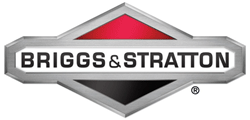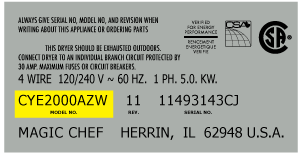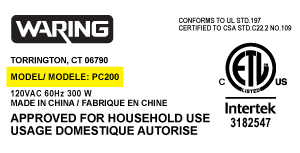WASE5210B2WW General Electric Washer - Instructions
Keep searches simple. Use keywords, e.g. "leaking", "pump", "broken" or "fit".
broken dampening strap and loose agitator
first remove the front washer cover by finding the two pressure clips that hold it to the top lid. gently push the putty knife into the clips one at a time. this will raise and separate them from the front panel. the panel will tilt forward and u can now remove it from the bottom clips by sliding it up and out. to open the top cover u remove the two 1/4 in screws on the sides of the front panel and lift the top. make sure to secure it in place or unplug the single electrical connection at the rear and remove the whole top from the clips, its really simple and the most convenient mehtod. to remove the straps u can now get to all four without much interference. there are two size screw heads so make sure u have a nut driver or small socket set. after changing the straps i went to change the agitator coupling. the agitator pulled directly up without a problem. just put your two hands under and pull straight up with one good jolt. the plastic coupler has one bolt in the middle that came out easily with a small socket set. my problem arose when the plastic coupler would not come off the metal shaft. after a short time of pulling and prying i finally decided to cut it off. using a small hacksaw and taking my time i put two cuts into the coupler. they were on opposite sides and where vertical, running along the steel shaft. i could now split it in two and it came off very easily and quickly. now when putting on the new one make sure the splines line up. push as far down as u can then use the center bolt to seat the gear all the way down. the agitator also has to be lined up just right. it also has splines on the interior that allow it to line up with the coupler and merely push down until it reseats itself in place. replace the top of the washer and then the front panel. don't forget to rebolt the top panel to the frame. push the front panel in until it snaps into place. full replacement time was about 40 minutes and actually not bad with the right tools.
Parts Used:
-
molly from laguna niguel, CA
-
Difficulty Level:Easy
-
Total Repair Time:30 - 60 mins
-
Tools:Nutdriver, Socket set
286 of 305 people
found this instruction helpful.
Was this instruction helpful to you?
Thank you for voting!
Agitator would not move during wash cycle
I placed both hands under the agitator 180 degrees apart, gave a quick jerk, and seperated the agitator from the coupling. With the agitator removed, use a socket and ratchet to remove the bolt holding the coupling to the spline. Remove the old coupling and slide the new one over the spline. Lightly tap on the coupling if necessary. Insert the bolt with the ratchet and slide the agitator back over the coupling and you are done.
Parts Used:
-
Mark from Lexington, KY
-
Difficulty Level:Easy
-
Total Repair Time:Less than 15 mins
-
Tools:Socket set
229 of 261 people
found this instruction helpful.
Was this instruction helpful to you?
Thank you for voting!
machine would not drain all other functions seemed o.k
Aside from getting the wet clothes and most of the water out,the toughest part of the job for me was to figure out how to get inside the machine. I nearly wrecked the thing trying to lift the top panel. After some frustration I removed the star-type screws on back of the control panel and found, tucked away neatly, the documentation/parts list complete with instructions on how to remove the FRONT panel. Once I got inside it was easy to locate the pump. I ran the drain cycle for a moment to see if the pump turned at all. The original had an exposed fan so it was easy to see that indeed the motor was not turning. I inspected all the hose and electrical connections to make sure I had the tools I'd need and the savvy to replace the part(s) if I could locate them. I'm not much of a web-head, so I was a little surprised when I typed G.E. appliances and the search took me to partselect.com where I was pretty much coached through the procedure before I even ordered the part. The box arrived ahead of schedule (yay) and when I looked at the pump it didn't look much like the one I was replacing. But then I realized it was the same thing just ten years more advanced. I used a small pair of vise grips to pinch and lock the pipe clamps open. I know there is a plier made for this, but... Anyways, after loosening the clamps and sliding them away from the pump I pulled the hoses off and let the last of the rinse water still in them run down my shirt sleeve to my elbow. (optional, not recommended) Thus refreshed I then rummaged through my socket set and found what I needed to remove the 2 sheet metal mounting screws and disconnected the 2 power leads. I removed the faulty pump and proudly showed it to my wife. Unimpressed, she asked how much longer. I quickly reversed the procedure to install the new unit and confidently piled in a load of laundry. The cycle completed just fine and has done so since. I will and have recommmended partselect.com to friends and will use it again for sure.
Parts Used:
-
douglas from danby, VT
-
Difficulty Level:Easy
-
Total Repair Time:30 - 60 mins
-
Tools:Socket set
86 of 90 people
found this instruction helpful.
Was this instruction helpful to you?
Thank you for voting!
Bearing on the transmission to tub wore out (mostly due to the washer not being level)
The back of the control panel had an instruction pamplet that was very useful. 2 parts did not go as written tho. To "pop" the spinner out, required short 1x4s and a shake/shingle bar to pry it up and the wedging of the 1x4s under it, until enough strain was put on it to "pop" it off. Then the large 1&11/16 nut was a bear. It required a short pipe wrench (so it fit in the tub) and a hammer to brake it loose.
Parts Used:
-
Victor from League City, TX
-
Difficulty Level:Difficult
-
Total Repair Time:More than 2 hours
-
Tools:Nutdriver, Pliers, Screw drivers, Socket set, Wrench (Adjustable), Wrench set
89 of 105 people
found this instruction helpful.
Was this instruction helpful to you?
Thank you for voting!
Washing machine stopped during rinse cycle - was on and would fill but wouldn't agitate. Found that the wires on lid switch had been severed by agitation over the years.
I turned off the water and inplugged the washer. Then removed the Torx screws off the back control panel. Inside there was a schema of the machine with notes on how to remove the front panel. If you already know how to do that - this step would be unnecessary. Next I took a putty knife and placed where shown (lined up with lid openings) to release the front panel - one clip on each side of the top of front panel and then removed the panel completely. I used a thin screwdriver to help remove the old lid switch as the locking tab is quite hard to press in otherwise. I cleaned up and stripped the old wires to prepare for splice. I fed the new wires through lid switch hole and snapped it into place. I stripped the shield back on the new lid switch to prepare for splice. I threaded shrink wrap wire cover over one side of each wire and then put that end in a splice wire connector and crimped it down with the pliers. I placed the other end of like colored wire in the other end of the splice connector and crimped it down. Repeated for other wire. Then slid the shrink tubing over the splice and used the hair dryer to shrink the tubing over the new splice. Then used the electrical tape to tape the two spliced wires together and to identify it as a repaired section. Returned front panel and paperwork to control panel and Voila! had a working washing machine.
Parts Used:
-
Lisa from DuPont, WA
-
Difficulty Level:Easy
-
Total Repair Time:15 - 30 mins
-
Tools:Pliers, Screw drivers
60 of 72 people
found this instruction helpful.
Was this instruction helpful to you?
Thank you for voting!
Leaking oil into the washer (in tub and on clothes)
Had never repaired a washer before, but have several tools and enjoy working with my hands. Knew it would be cost prohibitive to call a repairman, and didn't have anything to lose. Quick delivery from partselect -- reasonable price, too. This was as easy as simply taking the whole washer apart (NOTE -- there are instructions behind the knobs inside the unit that are very helpful!) replacing the transmission and putting it all back together. Hardest part was getting the hub nut off of the transmission axle. To get it off (REVERSE THREADED, so 'tighten' to 'loosen') I used a 1 11/16 socket and impact wrench. Use the same tool to tighten (but go EASY...don't overtighten). This was not difficult, but just took some time. A couple of evenings later, we were washing again like NEW. Part cost around $160, labor was 'free' and much less than a new $500 top loader or $800 front loader. If you enjoy taking things apart and have some tools, then go for it!
Parts Used:
-
Scott from Bloomington, IN
-
Difficulty Level:Easy
-
Total Repair Time:More than 2 hours
-
Tools:Nutdriver, Pliers, Screw drivers, Socket set, Wrench (Adjustable), Wrench set
54 of 57 people
found this instruction helpful.
Was this instruction helpful to you?
Thank you for voting!
Pump and Motor Assembly began leaking and then seized.
First I removed the front panel by prying it forward with a Screw driver away from the side panels at the top (wrap a shop rag around the Screw driver to keep from scratching the paint). Once you have the panel pried loose at the top ... lean it forward until you can lift it off the tab type hooks at the bottom.
I next unplugged the wires from the motor. The orginal motor had three wires ... two on top and one on the left side. The one on the side is a ground wire for the open frame motor. The replacement motor is sealed and does not require this wire. Just leave it unplugged when the new one is installed.
Next I removed the inlet hose that attaches to the back of the pump. Remove it by loosening the hose clamp and removing it from the bottom of the tub, leaving it attached to the back of the pump. It is much easier to remove and transfer to the new pump once it is out rather than fight with the spring type clamp on the back of the pump in the close quarters inside the machine.
Next I removed the outlet hose from the top of the pump. Squeeze the spring clamp with Pliers and work it up and off the pump.
Now I just used a Socket to remove the two bolts holding the bracket to the inside front of the machine and removed the assembly.
I now removed the inlet hose from the back of the old pump. Just squeeze the spring clamp with Pliers and work it up the hose and off the pump. Transfer the hose to the back of the new pump reusing the same clamp.
I now bolted the assembly back into the machine, reattached the outlet hose to the pump, and then reattached inlet hose to the bottom of the tub. All that was left to do was plug in the two wires to the top front of the pump motor (as I mentioned earlier, leave the side wire from the old pump unplugged as it is not needed on the new one). I then ran the machine for a few moments with the front off to check for any leaks and then put the front panel back on.
The whole replacement cost about $50 and took barely 15 min. from start to finish. The machine now works perfectly.
I next unplugged the wires from the motor. The orginal motor had three wires ... two on top and one on the left side. The one on the side is a ground wire for the open frame motor. The replacement motor is sealed and does not require this wire. Just leave it unplugged when the new one is installed.
Next I removed the inlet hose that attaches to the back of the pump. Remove it by loosening the hose clamp and removing it from the bottom of the tub, leaving it attached to the back of the pump. It is much easier to remove and transfer to the new pump once it is out rather than fight with the spring type clamp on the back of the pump in the close quarters inside the machine.
Next I removed the outlet hose from the top of the pump. Squeeze the spring clamp with Pliers and work it up and off the pump.
Now I just used a Socket to remove the two bolts holding the bracket to the inside front of the machine and removed the assembly.
I now removed the inlet hose from the back of the old pump. Just squeeze the spring clamp with Pliers and work it up the hose and off the pump. Transfer the hose to the back of the new pump reusing the same clamp.
I now bolted the assembly back into the machine, reattached the outlet hose to the pump, and then reattached inlet hose to the bottom of the tub. All that was left to do was plug in the two wires to the top front of the pump motor (as I mentioned earlier, leave the side wire from the old pump unplugged as it is not needed on the new one). I then ran the machine for a few moments with the front off to check for any leaks and then put the front panel back on.
The whole replacement cost about $50 and took barely 15 min. from start to finish. The machine now works perfectly.
Parts Used:
-
Michael from Alexandria, IN
-
Difficulty Level:Really Easy
-
Total Repair Time:15 - 30 mins
-
Tools:Pliers, Screw drivers, Socket set
51 of 56 people
found this instruction helpful.
Was this instruction helpful to you?
Thank you for voting!
agitator was no turning
Repaired Agitator - required to pull from the bottom pulling on one side a little more then the other. Once you got loose it comes right off. Under neith there is a bolt that holds on agitator coupler. remove the bolt with wrench or socket wrench and then the agaitator coupler. Replace with new agitator coupler ,make sure grooves are aligned when putting on the rotor. Tap the top of the agitator coupler lightly until it is completely seated. Put the bolt on with wrench or socket wrench. Put the agitator back on over the agitator coupler and agin make sure grooves are alighned and push down until it feels it is seated. When done, give it a light pull to make sure it is secure and then you are done.
Parts Used:
-
Jody from Deefield, IL
-
Difficulty Level:Easy
-
Total Repair Time:15 - 30 mins
-
Tools:Socket set
34 of 36 people
found this instruction helpful.
Was this instruction helpful to you?
Thank you for voting!
washer didn't spin & water would not pump out
removed hoses and clamps. removed 2 bolts on pump. put it back together. done 15 min.
Parts Used:
-
Ken from West Monroe, NY
-
Difficulty Level:Really Easy
-
Total Repair Time:Less than 15 mins
-
Tools:Pliers, Wrench set
35 of 40 people
found this instruction helpful.
Was this instruction helpful to you?
Thank you for voting!
oil leaked on clutch and slipping
followed the instruction on the wiring sheet and removal and repair sheet that comes with the wahing machine. They wee very good directions and the only problem that I had wa getting the 1 and 11/16 inch not off the shaft that holds the tub to the transmission, The main problem was that the transmission had leaked all over the break and the tub would spin while hitting the pipe wrench with a claw hammer. Ended up using a 10 lb sledge hammer to hit the pipe wrench and that finally loosened up the nut, but that was the only real problem i had. I say this was easy except for getting off that nut
Parts Used:
-
PETER from MCMURRAY, PA
-
Difficulty Level:Easy
-
Total Repair Time:1- 2 hours
-
Tools:Socket set
32 of 35 people
found this instruction helpful.
Was this instruction helpful to you?
Thank you for voting!
Broken knobs
Actually putting on a knob is self-explanatory. But wanted to say your company had the best price and reaction (delivery time). Great job by PartSelect!
Parts Used:
-
Ray from South Pasadena, FL
-
Difficulty Level:Really Easy
-
Total Repair Time:Less than 15 mins
42 of 66 people
found this instruction helpful.
Was this instruction helpful to you?
Thank you for voting!
Washer agitator not working
First I removed the agitator with a belt. Then I removed the nut with a wrench. The Agitator coupli was smooth on the inside so I knew that was the problem. I got the new part, slid it into place. Tightened the new bolt and replaced the Agitator component with a quick push downwards. Easy!
Parts Used:
-
Brenda from Coon Rapids, MN
-
Difficulty Level:Easy
-
Total Repair Time:Less than 15 mins
-
Tools:Wrench set
30 of 38 people
found this instruction helpful.
Was this instruction helpful to you?
Thank you for voting!
Broken Support Tab
Removed front cover, lifted lid. Unnapped the broken tub cover pulling the tub forward to allow the old cover to clear the rear of the housing/top. Installed the new tub cover by once again doing the same thing and carefully snapping it into place. Reconnected the rubber sping offloads, lowered the top and reinstalled the front cover..ready to run.
Parts Used:
-
David from Rancho Cucamonga, CA
-
Difficulty Level:Easy
-
Total Repair Time:Less than 15 mins
-
Tools:Nutdriver
30 of 42 people
found this instruction helpful.
Was this instruction helpful to you?
Thank you for voting!
Loud noises when spinning and no spin
I followed the instructions provided by GE that were stored in the control section of the washer. Removing the hub nut was a huge pain. It took Liquid wrench, hammer, pipe wrench and patience to remove it. Other than that it was fairly easy. I didn't like the way the tub seal fit so I used some silicon gasket making material to help make sure the seal sealed good against the tub.
Parts Used:
-
James from Spring, TX
-
Difficulty Level:A Bit Difficult
-
Total Repair Time:More than 2 hours
-
Tools:Nutdriver, Pliers, Screw drivers, Socket set, Wrench (Adjustable), Wrench set
24 of 31 people
found this instruction helpful.
Was this instruction helpful to you?
Thank you for voting!
Discharge Pump was leaking on our GE Washer
Popped the front off the washer by placing a towel under the screwdriver to prevent chipping the paint. Had to spent almost 45 minutes soaking up water that had leaked from pump. Must have been leaking for some time before enough leaked under washer and became visible, because there was a lot of rust build up. (1).Removed old pump by first un-pluging washer and them removing (2) connecting wires from pump. (3).Next use nut driver to loosen flex hose from washer. (not from pump). Loosen spring clamp from discharge hose , and slide up. (4) Using nut driver I removed (2) hex screws that held pump to frame, then removed pump and motor assembly. (5). Mopped up water with large (old) bath towels (6). Used hair dryer to dry area. (7). Used wire brush to brush away surface rust. then used small shop vacuum to remove this surface rust. (8). Used small brush to paint white rust-olem paint on rusted areas, used hair dryer again to help paint to dry, then gave it a second coat and again helped it dry. (9). I then removed flex hose from old pump assembly, checked it for cracks and finding none I attached it to new pump with existing spring clamp. (10). I then put pump assembly back inside washer, but did not attach with hex screws yet. (11). Re-attached the drain hose by sliding the spring clamp back down, making sure it is around the hose and discharge spout. (12). Reattach the flex hose to washer discharge spout. (13). Screw new pump and motor assembly unto newly painted frame. (14). Re-attach (2) wires to pump and motor assembly. (15). Plug washer back in and try filling it with some water, letting it go into the drain cycle to check for leaks. NOTE: You don't have to go through and entire wash cycle. Just use the dial to put some water in then move it to drain and /or spin to get the new pump and motor assembly going. I did this a couple of times and then did an entire load of clothes to ensure there were no leaks. After I was sure there were no leaks, I simply popped the front panel back on. My part cost a total of $64.00 including shipping, and it took me about 1 hour of my time. I checked with my local GE dealer and his cost would have been $98.00 for the part, and $85.00 for labor for a total of $183.00. I AM VERY HAPPY. Oh bye the way I had my part within 3 days of the order and that was with regular shipping. I will always use Parts Select from now on.
Parts Used:
-
George from Cambridge, MD
-
Difficulty Level:Really Easy
-
Total Repair Time:30 - 60 mins
-
Tools:Nutdriver, Pliers
16 of 16 people
found this instruction helpful.
Was this instruction helpful to you?
Thank you for voting!































